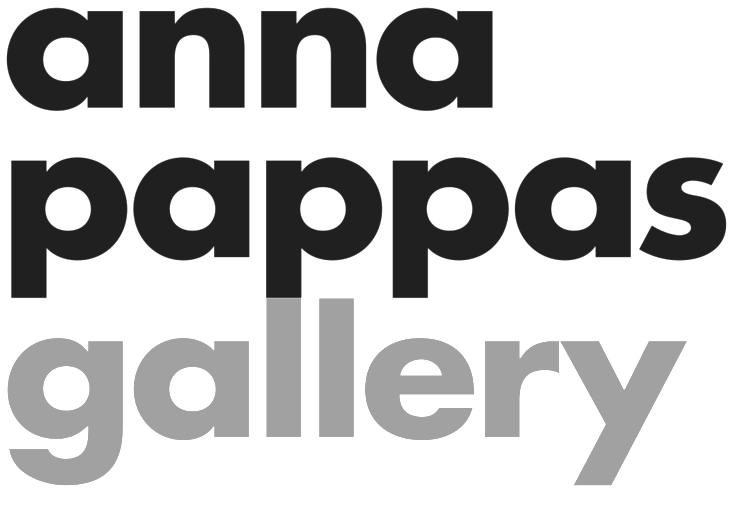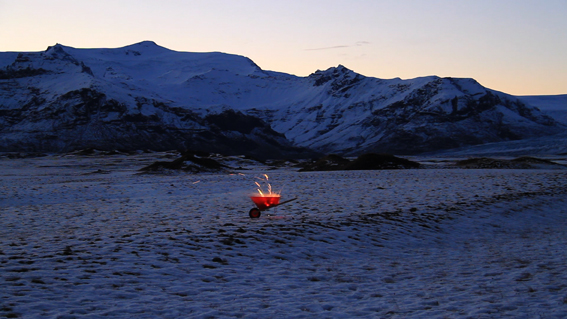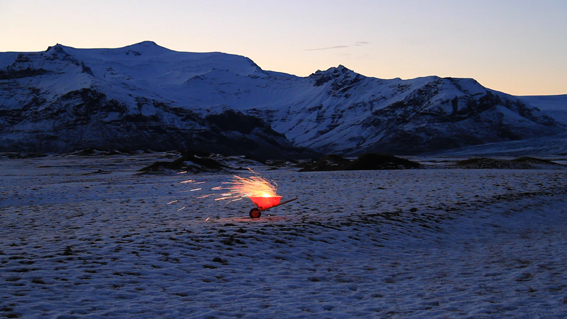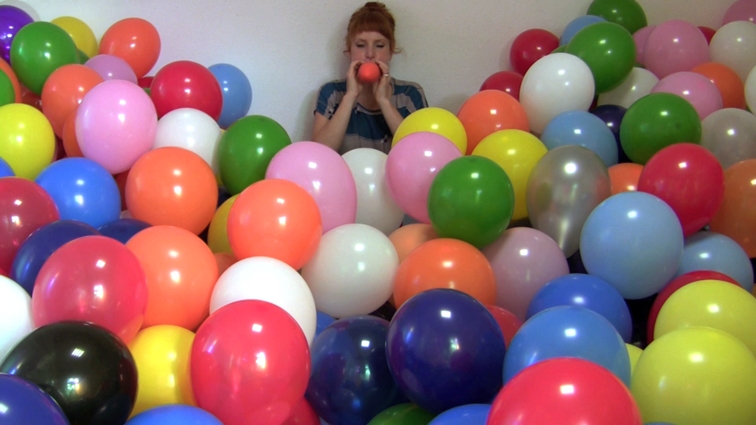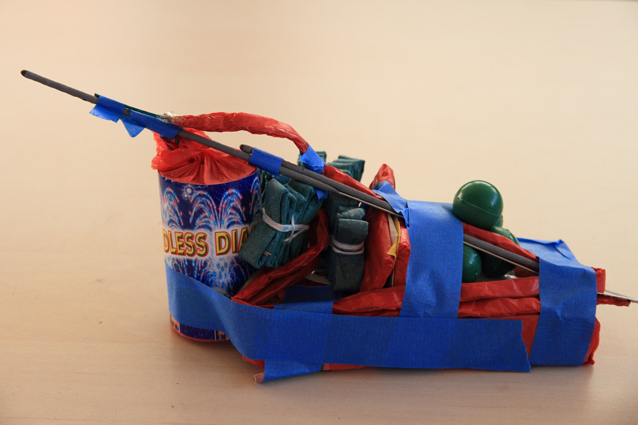Michaela Gleave, I Would Bring You The Stars, 2010, lambda Print, 59 x 39cm
Iceland’s weather was highly unusual in 2010, the year Michaela Gleave undertook the NES artist residency in Skagaströnd. One of Iceland’s most frequently erupting volcanoes, Eyjafjallajökull, ejected lava several hundred metres into the air before exploding fine, glass-rich ash to over 8 kilometres into the atmosphere. The event made international headlines as it caused enormous disruption to air travel across western and northern Europe.
Six months later Gleave produced I would bring you the stars: a series of video stills in which a small bomb, made from leftovers of one family’s New Years Eve celebrations, is detonated in front of the Vatnajökull ice cap. Transported via wheelbarrow, the fireworks explode against the Icelandic winter dusk causing sparks to blow horizontally into the glacial wind. A small gesture in the immensity of the Icelandic landscape, the explosion functions almost like a smoke signal, a burst of light thrown out into the timelessness of the universe from an explosion that only the artist ever saw.
Gleave’s new body of work harks back to the 1970s, when experiments in controlling destruction emerged as new form of performative sculpture. One of the first events held in The Museum of Modern Art Sculpture Garden was Jean Tingley’s Homage to New York, a machine rigged to perform for half an hour and ultimately self-destruct. Similarly during this period Fluxus artists devised “Happenings”, minimal performances that blurred the distinction between object and event. The influence of such works upon contemporary art is demonstrated when we consider Swiss artist Roman Signer’s installation Accident as Sculpture (Unfall als Skulptur (2008), in which Signer rolled a three-wheeled delivery car, loaded with water barrels, down 11m high ramp causing the vehicle to overturn and crash to the ground.
Establishing a similar lineage, Gleave’s exhibition I would bring you the stars presents a series of experiments into the nature of matter, space and time. True to this, certain aspects of these works were intentionally left to chance. For example I would bring you the stars (101 nights) is a simple A4 document that makes a pledge to an unknown recipient, in which the artist promises to send them a star every night at sunset for 101 nights. The stars are to be sent via text message, chosen from those present in the night sky that evening. Another performative experiment, 7 Stunden Ballon Arbeit/ 7 Hour Balloon Work, took place live via web cam between Berlin and Sydney in July 2010. The artist sat in a room for the duration of the seven hour event blowing up balloons, gradually filling the space and burying herself in her own actions, before simply popping them all and leaving the room. The work was enacted as a measure of time and space, then immediately flattened by the immediacy of the global communications. The air between before and after, reduced to a pile of deflated skins on the studio floor.
Infused with a sense of hope and longing, the exhibition I would bring you the stars maps the artist’s journey as she attempts to experiment with the unknown. Yet ultimately Gleave’s exhibition poetically confirms there are some concepts and forces that are much bigger than human activity. Some things, such as the stars, will always remain outside of human control.
